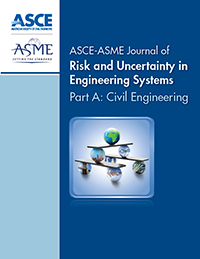Methodology to Quantitatively Assess Impacts of 5G Telecommunications Cybersecurity Risk Scenarios on Dependent Connected Urban Transportation Systems

Vargas, P., and Tien, I., “Methodology to Quantitatively Assess Impacts of 5G Telecommunications Cybersecurity Risk Scenarios on Dependent Connected Urban Transportation Systems,” ASCE-ASME Journal of Risk and Uncertainty in Engineering Systems, Vol. 8, No. 2, June 2022
Abstract — The fifth generation (5G) technology standard for cellular networks is currently being developed and is in the early stages of rollout across the United States. This upgrade from 4G LTE (long-term evolution)will not only have implications for the telecommunications network itself, but also on the many critical infrastructure systems that will use and depend on 5G for operations and functionality. Cellular vehicle-to-everything (C-V2X) technology utilizes 5G and has the potential to improve the safety and efficiency of the transportation system by allowing vehicles to communicate with one another and automating certain driving features. However, it is important to consider the risks that 5G brings, including cybersecurity risks, and how attacks through the 5G network can disrupt a traffic network that includes C-V2X technology. This paper presents a method to characterize the effects of several risk scenarios. Compared to prior qualitative risk assessments, outcomes include quantitative indicators measuring system safety and performance for analysis. The approach enables a more detailed and rigorous assessment of interdependent systems risks between the telecommunications and transportation networks than previously possible, particularly in the transition to 5G. A range of potential risk scenarios are assessed. The results show that cyberattacks that alter the behavior of vehicles cause delays across the entire network, cascading across the system and affecting more than just the vehicles directly targeted. The simulations show different levels of traffic delays and numbers of collisions for each risk scenario, indicating that the effects of a cyberattack can differ widely depending on the specifics of the attack. The simulation is easily adaptable to the location, C-V2X features, and risk scenarios of interest. Results provide information to formulate and prioritize risk mitigation strategies as the technology is developed to minimize the impacts of these attacks and system disruptions.
Leave a Reply